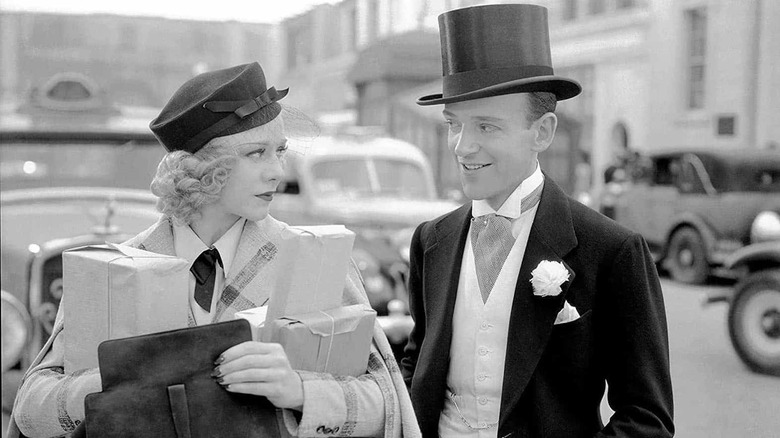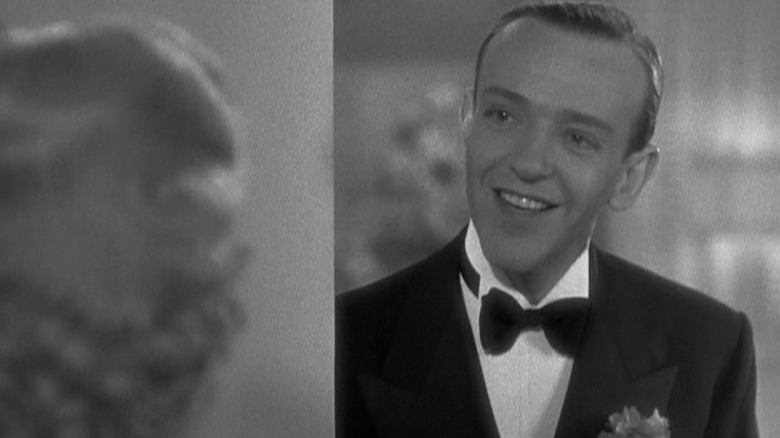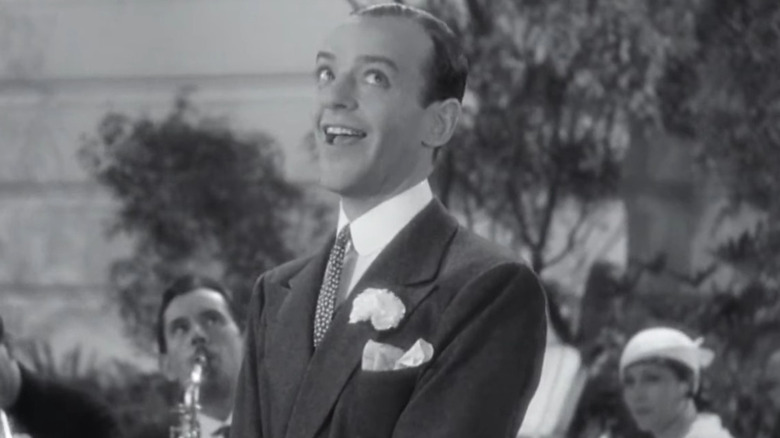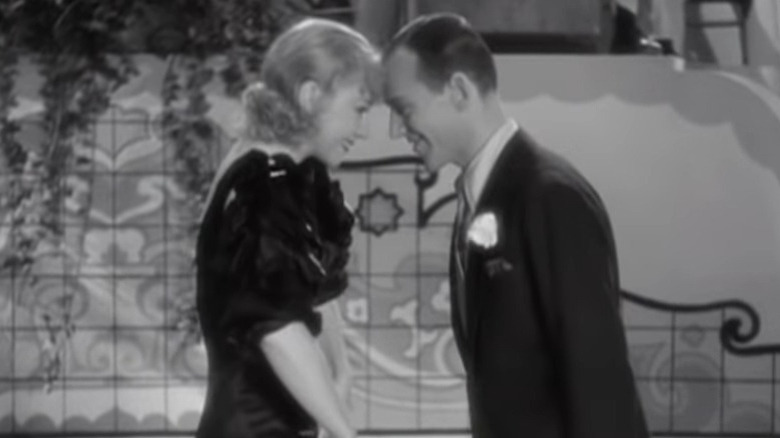Fred Astaire's First Screen Test Got Harsh Reviews
If you are a fan of classic Hollywood movie musicals, there is a strong chance you have probably had the debate: Gene Kelly or Fred Astaire? It's a silly debate, obviously, but pitting the two premiere tap-dancing leading men of some of the most loved films of all time against each other is a classic cinephile's version of, "Who would win in a fight, Superman or Wonder Woman?" If I have to choose, I choose Gene, but I have nothing against Fred (well, except for the blackface sequence in "Swing Time"). Despite their unparalleled hoofing skills, I go to the two men for completely different things. When I want athleticism and relatability, I go for Gene. When I want precision in both movement and story, I go for Fred.
Fred Astaire is undeniably Hollywood legend, thanks in large part to his on-screen chemistry with the equally delightful Ginger Rogers, but his path to stardom was not an obvious one. You look at Gene Kelly, and you see a dazzling movie star cut from marble. You look at Fred, and you might not realize he could light up a room. Infamously, his initial screen test of RKO was a disaster, receiving the feedback (via Life):
"Can't act; slightly bald; can dance a little."
In a way, the reception was slightly justified. He was balding, and he made his name in vaudeville, where depth of character is not exactly required to entertain an audience. You would imagine that after getting that response he would head on back to the New York theatre scene without a contract. Luckily for him, he had one champion that not only got him that contract with RKO but turned him into a movie star. That champion was David O. Selznick.
'Provided only that he photographs'
David O. Selznick was about as successful a producer as you could possibly be. He wielded enormous power, which he used to let artists do what they wanted. In the early 1930s, he led the charge in transforming RKO from a factory system of moviemaking into unit productions, so the focus of producers was not diluted and greater artistic intention could be put behind every project. Recounted in the book "The Classical Hollywood Cinema: Film Style & Mode of Production to 1960," Selznick said the factory system "rob[bed] the director of individualism" and was "harmful to the quality of the product."
Selznick was keen on bringing Fred Astaire to RKO, convinced he would become the next big movie musical star. In a memo to associate producer Lou Brock, collected in the book "Memo from David O. Selznick," Selznick implores RKO to bring in Astaire for a screen test:
"Astaire is one of the great artists of the day: a magnificent performer, a man conceded to be perhaps, next to Leslie Howard, the most charming in the American theater, and unquestionably the outstanding young leader of American musical comedy."
He believes in Astaire as a leading man ... "provided only that he photographs." So Astaire comes in, does the test, and gets that lackluster response. Even Selznick knows the test was bad, but that doesn't preclude him from wanting Astaire at RKO, saying in a memo to his assistant Philip Siff:
"I am a little uncertain about the man, but I feel, in spite of his enormous ears and bad chin line, that his charm is so tremendous that it comes through even in this wretched test, and I would be perfectly willing to go ahead with him for the lead in the [Lou] Brock musical."
Got the contract, but not the role
Despite the horrendous test, David O. Selznick's confidence persevered, and Fred Astaire signed a contract with RKO. The leading role that Lou Brock was looking to cast was for the film "Melody Cruise." Astaire did not get that part. Ultimately, it went to Phil Harris, best known as the voices of Baloo and Little John in Disney's "The Jungle Book" and "Robin Hood," respectively.
But Astaire's first film didn't even end up being at RKO. Selznick had made his way over to MGM, and he brought Astaire over on loan to appear as himself in the backstage musical "Dancing Lady" with Joan Crawford and Clark Gable. It's a small role, but he gets to perform a couple of numbers with Crawford that show off his dancing skills and light charm. Easing him into the movie world by placing him in a context that best shows off what made him a must-see on stage was a very smart move.
Back over at RKO, Brock decided to slot him into another movie in a supporting role. This was a picture called "Flying Down to Rio," which was headlined by Dolores del Rio and Gene Raymond. Astaire takes on the role of a bandleader, and it was clear he was the film's standout, with Variety saying:
"The main point of Flying 'Down to Rio' is the screen promise of Fred Astaire. He's distinctly likable on the screen, the mike is kind to his voice and as a dancer he remains in a class by himself."
"Flying Down to Rio" has two key sequences. First, Astaire performs the titular tune as a chorus of women dance on the wings of airplanes in the sky (yes, really). The other helps shape his entire career thanks to his scene partner.
The immediate pairing with Ginger Rogers
Magically, "Flying Down to Rio" not only was Fred Astaire's first film under contract at RKO, but he's immediately paired up with Ginger Rogers in the picture. She had made her way around the various studios, from Paramount to Pathé Warner Bros., and she put a few quite memorable roles under her belt, particularly in "42nd Street" and "Gold Diggers of 1933" (my personal favorite). She ended up at RKO, and her second film at the studio was "Flying Down to Rio."
In the film, the two get to dance the number "Carioca." Even with the spectacle of the planes in the titular number, "Carioca" is the picture's high point. The dance features Astaire and Rogers tap dancing with their foreheads pressed up against each other's for nearly the entire song. The scene is charming, funny, and sexy all wrapped into one. Astaire and Rogers are perfectly in synch with one another, and you forget that they aren't actually the leads of the movie.
Obviously, the folks at RKO knew this was money in the bank because the next year they get bumped up to above the title status for "The Gay Divorcee," and it paid out like a slot machine. The film became one of the 10 highest grossing films of 1934 and set them on the path of making a total of ten pictures together. Rogers eventually became the highest-paid American woman, according to The New York Times, and she made significantly less than Fred Astaire did, which goes to show you how big he was.
"Can't act; slightly bald; can dance a little."
This is where the film career of Fred Astaire started. Where it ended was him as a bonafide Hollywood legend, thanks to the right champion and the perfect screen partner.



